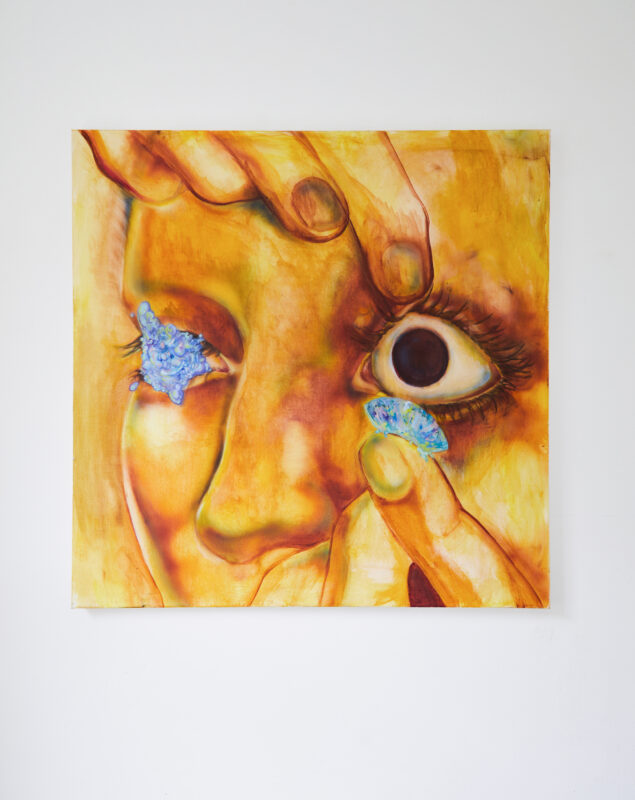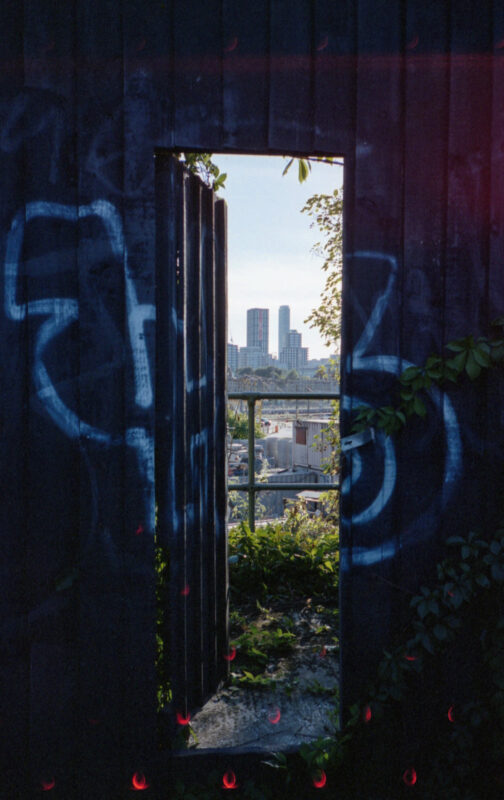
Charlotte Hopkins Hall recently sat down with Cedric Christie & Pascal Rousson to talk about her exhibition ‘Forever Entangled in a Causal Loop’, which recently opened at Gallery 46 in London.
Your practice involves, in the majority of your paintings, the painting of your back. What is the significance of this in the broader sense and could you elaborate on why you don’t call them ‘self-portraits’.
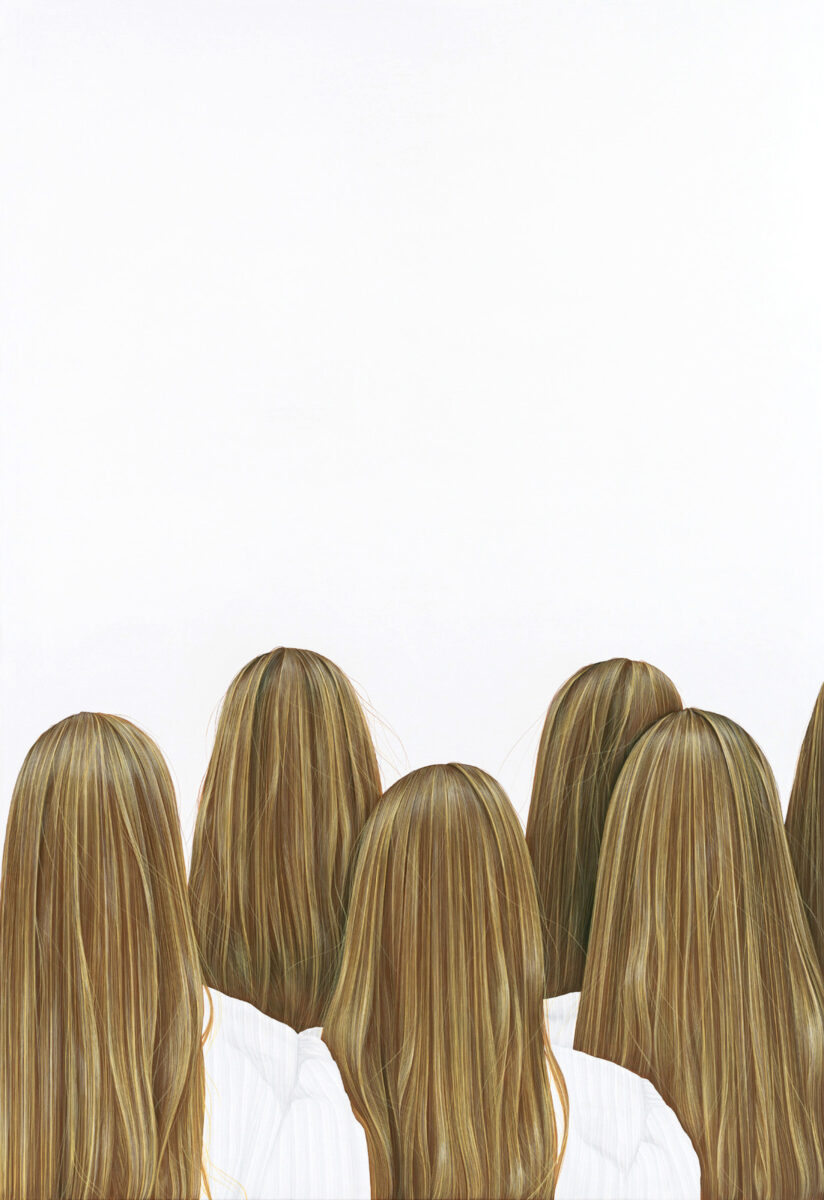
There are varying degrees to this question. I started using the image of my back as a social commentary. Whilst portraiture in painting, advertising or home photography, for example, have been central to societies for centuries, the last 15 years has seen an explosion of the face’s presence on every social media platform and ubiquitous technological device. We have become a society
obsessed by it, to the extent where the legitimacy of one’s existence is defined or determined by its outward presence. In response to this hyper-narcissistic evolution, I placed myself at the centre of my work, turned my back and by means of repetitions subtracted the identity from the figure, reducing its significance to a motif. The repetition of this motif then allows for the figures to become a template for my concepts, undistracted by the notion of self-portraiture. As such they are not self-portraits, however, the fact that this template is me, allows me to shoulder the responsibility of the topics I’m addressing and enables me to candidly bear witness to the complexity of the human experience.
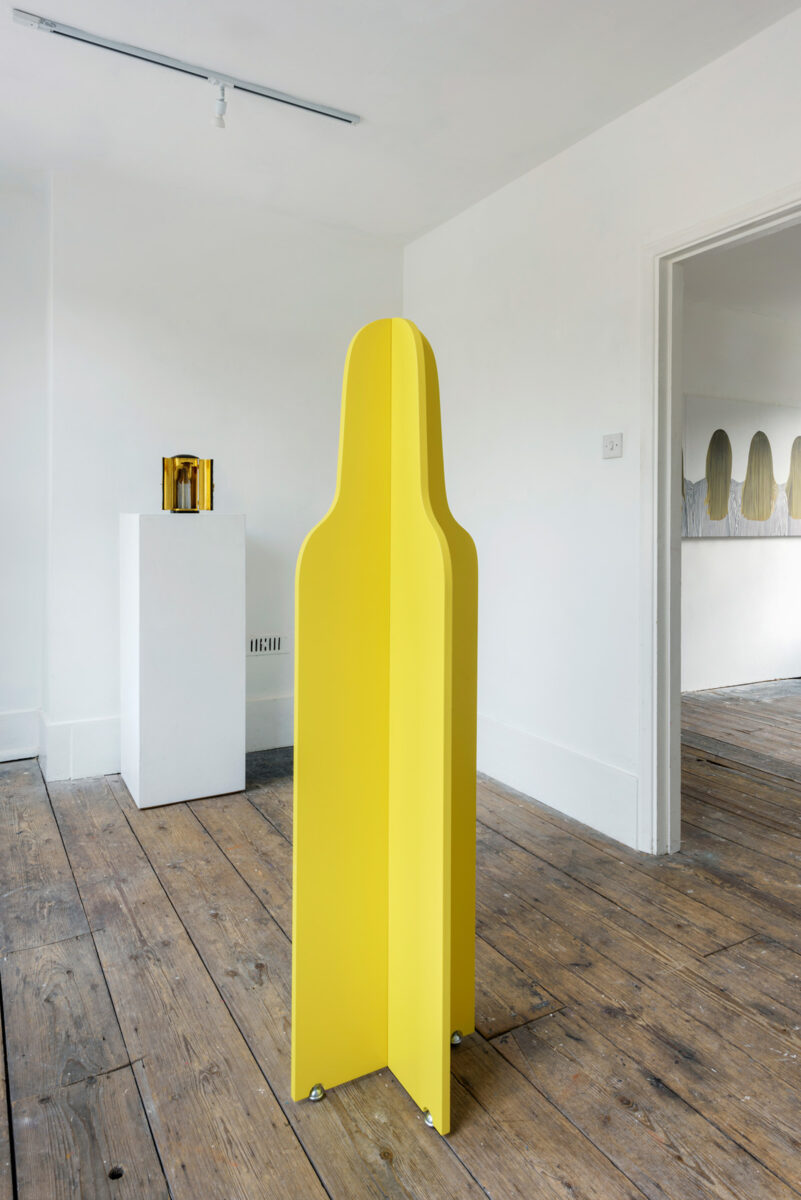
The sculpture is such a strong piece in this show that makes me feel like the paintings and their journey have been the sketch that has led to the sculpture. Would you disagree with that?
This is a very interesting question and I’m pleased that it was picked up on. To a certain extent the sculpture is the sum of it all; a total reduction to form, stripped of any paraphernalia or distraction. Its simplicity, reduced to an outline of the back, opens a narrative beyond the paintings and embraces art in its purest form.
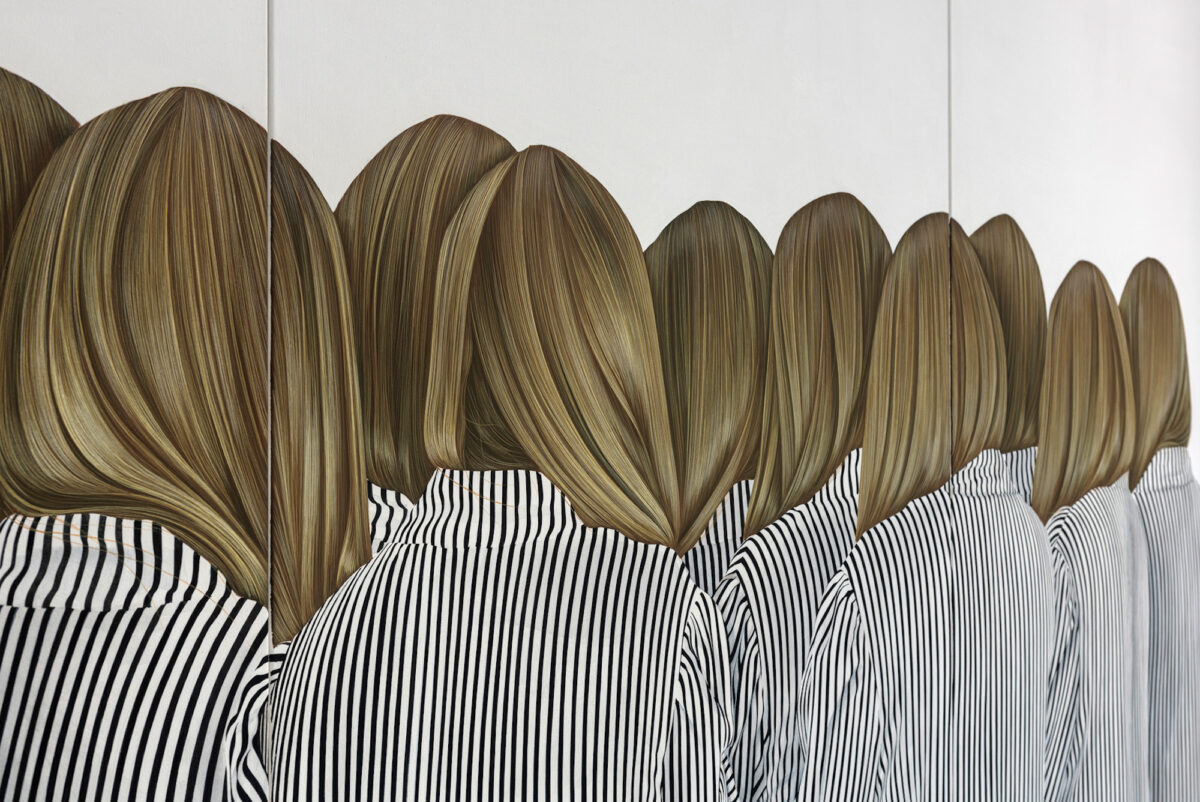
The work is so intricate; you paint hair by hair. How long on average does a painting take – with specific reference to ‘Caravan’ 35 x 100 cm – series and ‘Nonsense, Impostors and Rhetorical Bullshit’ triptych 150 x 300 cm.
They certainly challenge my sanity and my body. “Nonsense, Impostors and Rhetorical Bullshit” is a triptych, each panel measuring 150 x 100, that took me three months to paint. As you mention, each hair is painted individually with 0 and 0/3 paintbrushes, layer upon layer, dark to light. The entire surface is painted and what is left is only about 30% of the actual work but I wouldn’t get the depth and intricacy without this laborious process. Whilst the Caravan series are much smaller in dimension and assumed simpler in execution, to my surprise, they took a lot longer than l had anticipated; taking three weeks of intensive 7/7, 12 hours a day, working out at about the same time production ratio as the triptych. The hair grabs the attention, but the textiles are time-consuming with every line painted twice. The white backgrounds are also a stage of great focus having to be painted in one go no matter the size of the canvas, and during which any sound, phone, computer is switched off. The time I spend on the paintings is important to me. We live at such a fast pace, where attention spans are nearly all but lost, so this is my way of slowing time down. A wonderful comment made by one of my collectors is that he sits in front of my paintings every day and every day he sees something new and experiences something new emotionally. These are works you have to spend time with, that demand engagement, and to be properly understood, they need to be seen in the flesh. However well they reproduce photographically, the sheer size and the depth of the painting can only be completely experienced live.
Does the title of the show ‘Forever Entangled in a Causal Loop’ refer to your practice or what are the wider meanings that reflect the show and or works.
Funnily I hadn’t considered the title in the context of my practice, but now you mention it… I chuckle. This title was developed solely for the show, set to create a dialogue between the rooms and the paintings. The entire show is a piece in itself, and whilst a work can be viewed individually, it continues to exist within a greater context. The rooms are interlinked, each one leading to another and have influence on one another, like a causal loop they are connected, and their pure existence exerts influence on the other and vice versa. The thematic direction of transit through the exhibition begins with works that address a lack of leadership and political acumen, starting with Nonsense, Impostors and Rhetorical Bullshit, that refers to the emergence of the populist movement and political degradation. The huddled figures allude to an assembly seeking to influence one another, almost morphing into one another. Perhaps they meet in dissent under the guise of visual conformity. The rooms go on to lead you to the light room where the Caravan paintings and Hard Stop I & II pay tribute to the migration crisis in the 21st century. Circling back through the rooms to the exit, we are in the causal loop where the impact of Western capitalism, the constant political meddling and corporate vandalism has created insecurity forcing, whether for reasons of war, economy or climate, an exodus towards the Northern hemisphere, that is then used as a pretext by Western governments to lean further to the political right; hence, forever being entangled in a causal loop.
As painting seems to refuse to play dead, how do you feel about the practice of painting today? Is it just a constant re-enactment or déjà vu and a capitalist commodity acting as a continuity with the art of the past. Or do you think it has kept its essence of modernism and is still a powerful political tool?
Fantastic question. I went to art school from 1999 to 2004. Back then painting was unequivocally declared as dead. Figurative painting was particularly shunned and disparaged. So young, I didn’t pay much attention and painted figuratively from the offset. Intellectually, I understood why there was a desire to move away from it, hailing in an era devoid of an art history heavily laden with partisan goals and bourgeois pursuits, but I never believed that painting couldn’t be used as a provocative tool. As far as I was concerned so long as one was in the ring, it didn’t matter which medium was used. Paintings, merely as objects of desire, inevitably lend themselves to commodification. Where there’s money and gain there will be a market. Where a market becomes ensnared with itself, the art will suffer. We, as artists, have to tussle with this every day. I am a utopian realist and absolutely believe, without a shadow of a doubt, that painting can be used as a powerful political tool and can keep its essence of modernism because it remains relatable to the wider world and therefore remains relevant.
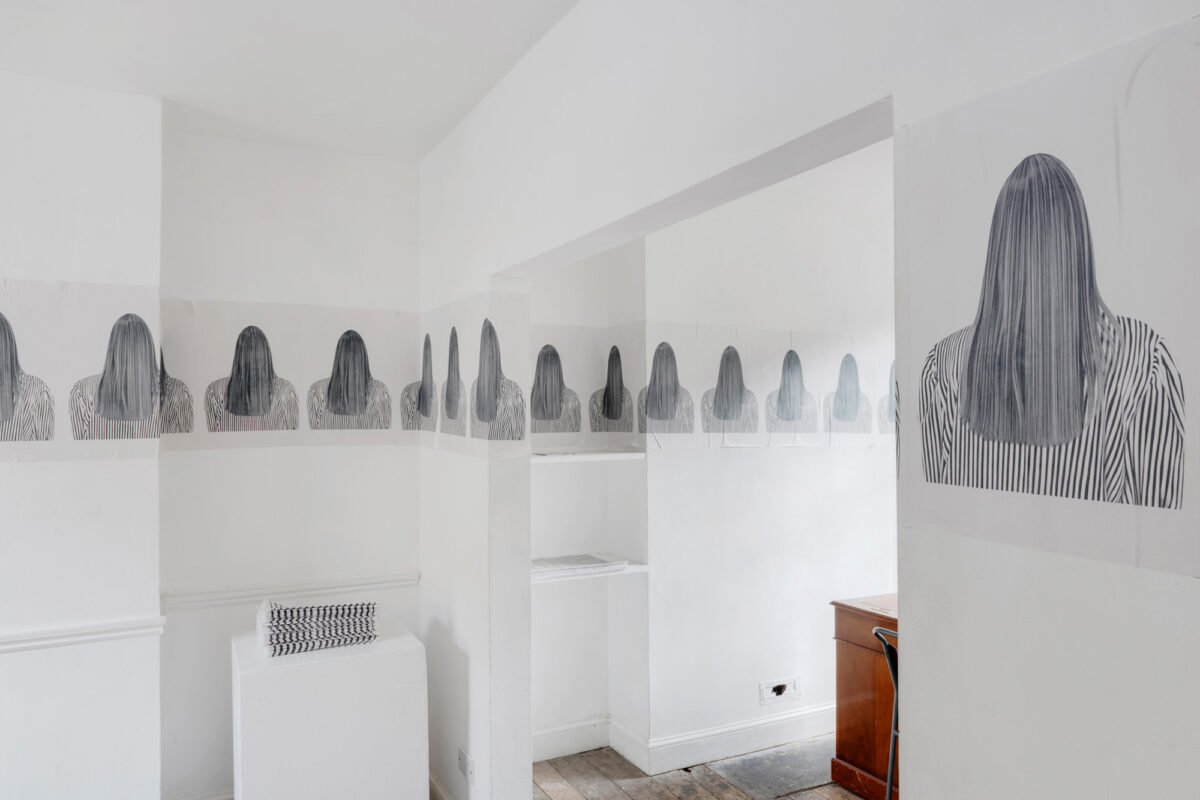
In the reception of your current show is a repetition of one image of the back of you, fly postered, like a street poster – is that correct, and what is the reason for this introduction to the show?
The gallery reception was a bit of a conundrum in as far as a traditional use of the space, i.e. hanging paintings, would have, to me, seemed ornamental and an unacceptable pastiche of the exhibition upstairs. I was in New York on 9/11, actually seeing it occur in front of my eyes and an image, amongst others, that has stayed with me for more than 20 years was the plastering of photos of missing loved ones all over the city in the aftermath. The idea to fly poster the gallery’s reception fitted with the Caravan paintings and Hard Stop I & II in the white room. Using a black and white reproduction of a simple painting of my back, like shadows, pays tribute to the loss of life, to the robbing of their identity, and to the simplification of individual stories to anonymous numbers, bringing the causal loop right to the entrance of the exhibition, and perhaps to the very beginning of where the hard swing the to the political right began in our contemporary history. I chose to use a cheap reproduction and the fly poster style to intimate urgency.
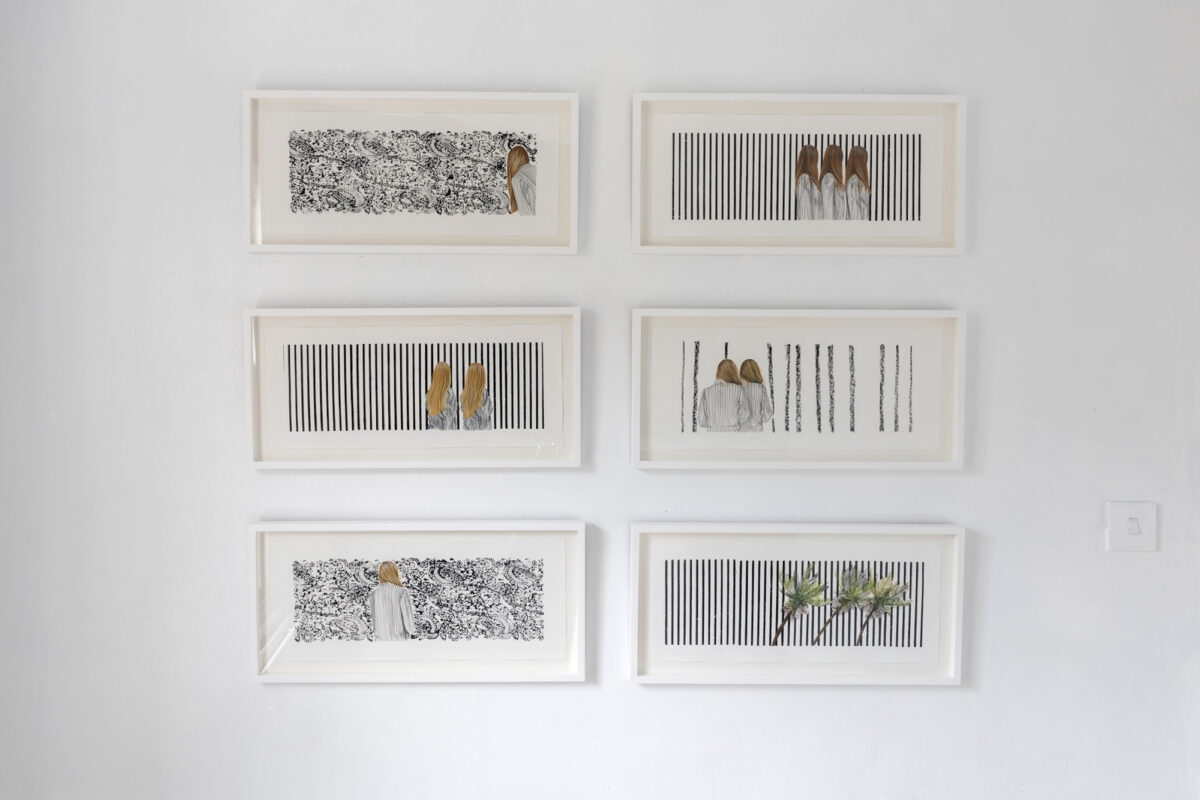
Charlotte Hopkins Hall, ‘Forever Entangled in a Causal Loop’, – 30th March 2024, Gallery 46

Gavin Turk will be in conversation with Charlotte Hopkins Hall from 6:30PM Thursday 21st March @ Gallery 46



